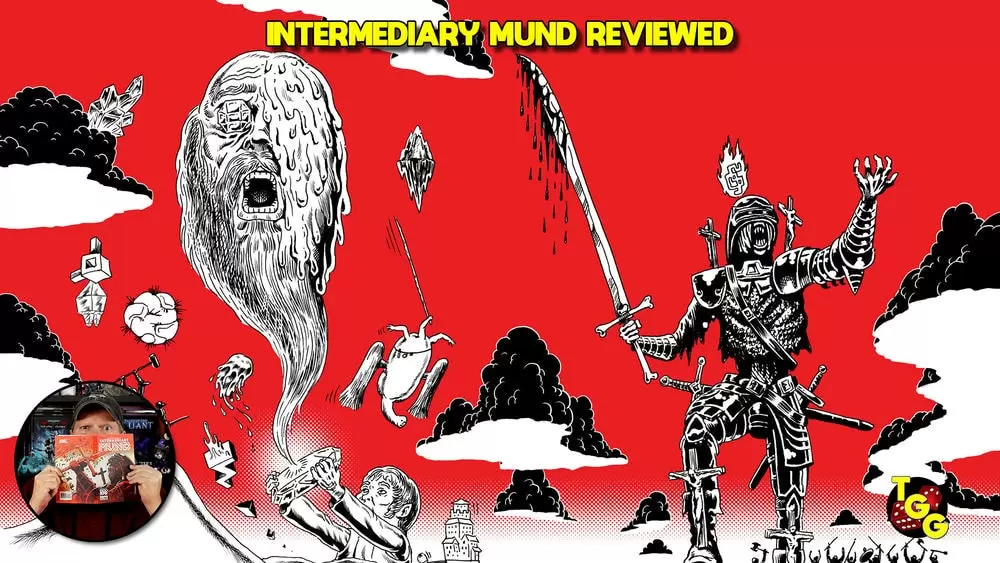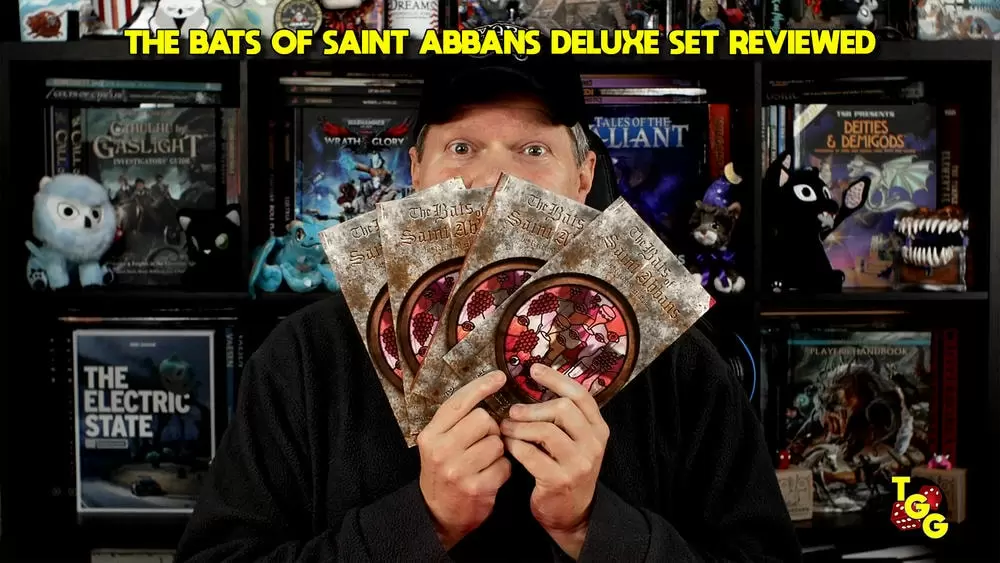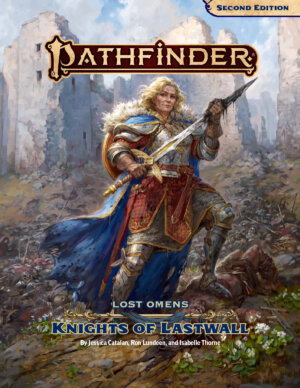
Publisher: Paizo Inc
Authors: Jessica Catalan, Ron Lundeen, Isabelle Thorne, Banana Chan, Ryan Costello, Katina Davis, Alastor Guzman, Ianara Natividad, Erin Roberts, and Ashton Sperry
Artists: Ekaterina Burmak, Hazem Ameen, Gislaine Avila,Oleg Bulatnikov, Taylor Fischer, Rob McCaleb, Will O’Brien, Vladislav Orlowski, Ian Perks, Christoph Peters, Sandra Posada, Ainur Salimova, Leonardo Santanna, Elisa Serio, and Jessé Suursoo
Year: 2022
Genre: Pathfinder roleplaying game adventure
Pages: 127 pages
MSRP: $34.99 in hardcover or $24.99 in PDF
Knights of Lastwall offers a deeper dive into its titular order, including insights into its history, culture, and everyday life for its members. Formed in the wake of a devasting tragedy brought on by the hubris of its predecessors, the Knights of Lastwall are especially welcoming to those looking to reinvent themselves, especially those working to overcome a less than sterling past. Because the order has been forced to rebuild from the ashes of its own mistakes, it takes care in offering the same opportunity to others.
While the Knights are certainly still a martial organization, deeply involved in the fight against evil and committed in their battle against the undead, the book stresses that not all characters within the organization’s ranks are 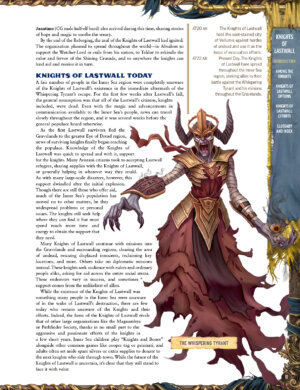
Abuse and survivorship are recurrent motifs in the book, always handled tastefully. Arazni, the former patron saint of the Knights of Ozem — the Knights’ of Lastwall’s ill-fated progenitors — was murdered, ripped back from the Great Beyond, held captive, and killed again only to ascend to full godhood as the deity of survivors, the abused, and those who will not let others dictate their fate. Patran Wardroxan, a member of the Dozen Roses faction, helps others to work through their scars, be they physical, emotional, or mental, in a healthy way. Knights who veer from the path of righteousness are offered the chance to confront their wrongdoing, make amends, and atone for their failings in a manner that is restorative, rehabilitative, and redemptive.
The Knights of Lostwall are a diverse organization, a fact highlighted by the profiles of its members and factions. Though many organizations offer membership to a variety of characters, the Knights of Lostwall exemplify the idea that there is room for everyone. While all are united in their dedication to the cause, their methodology can vary wildly. Many of the details in these sections help to add nuance and personality and offer GMs the potential for fun character moments with potentially heartbreaking callbacks.
One of the most interesting inclusions in the book involves the Knights’ relationship with religion. While all are welcome, even those who choose not to worship, the diversity of religious belief and practice has led to a kind of cross-pollination within the order. Knights have begun adopting and secularizing practices from across faiths and 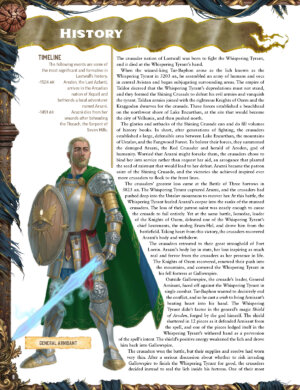
Fans of the Magaambya will also be delighted to see the school and its teachers making cameo apperances throughout the text, as the Magaambyans are close allies of the Knights. GMs who enjoyed the atmosphere of Kindled Magic will find plenty of new challenges for the heroes of the Magaambya should they seek to aid the Knights in reclaiming the Gravelands.
Admittedly, Knights of Lastwall’s prose isn’t as immediately gripping as some of Paizo’s recent entries. The nondiegetic approach allows for a wide range of information to be introduced and explained, but it isn’t as compelling as Geb’s narration and commentary in Book of the Dead, though the irony of comparing the two isn’t lost on this reviewer. The drama of the order’s founding feels somewhat muted which, while a tall order for a source book, is a missed opportunity; even a few more in-world snippets from characters relaying the horror of the destruction or Arazni’s ascent into godhood would have helped to humanize the events.
The Knights of Lastwall are an intriguing option for those called to play characters righteously dedicated to a cause, but unbound by hard and fast rules. The diversity of the organization’s membership, as well as a recognition that many problems lack an easy answer, allows GMs to throw in thorny problems to challenge players to consider what it truly means to be a knight.











